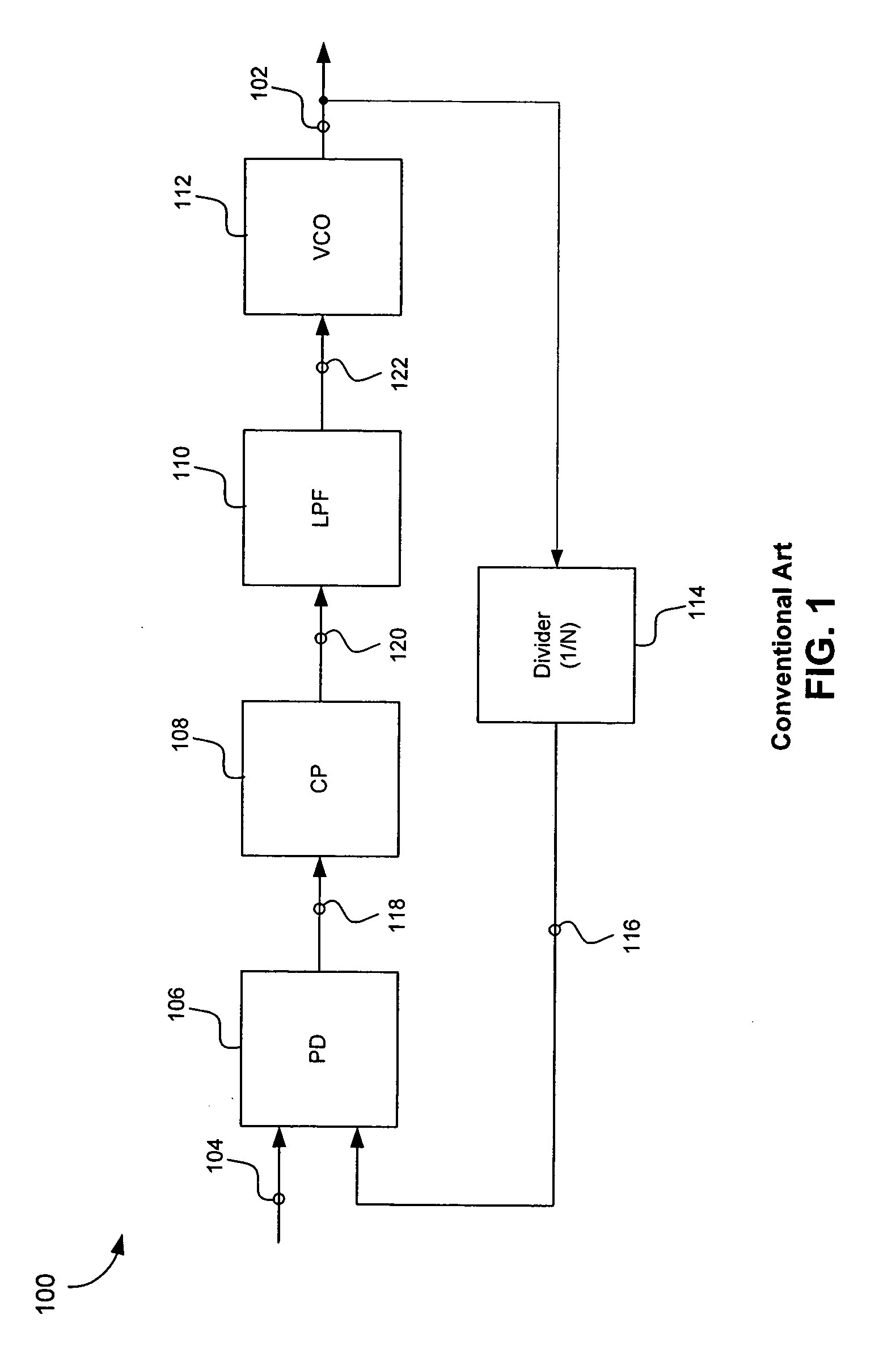Frequency-locked clock generator
a generator and frequency-locked technology, applied in the direction of electrical equipment, pulse automatic control, etc., can solve the problems of affecting the preventing adequate updating of the output clock signal, and jitter performance of the pll, so as to reduce the cost, improve the jitter, and improve the accuracy and stability of the output signal
- Summary
- Abstract
- Description
- Claims
- Application Information
AI Technical Summary
Benefits of technology
Problems solved by technology
Method used
Image
Examples
Embodiment Construction
[0018]FIG. 1 illustrates a conventional phase-locked loop (PLL) 100. In general, the conventional PLL 100 is used to generate an output signal 102 having a desired output frequency (i.e., fout) from an input signal 104 having a given reference frequency (i.e., fref). Often, the output signal 102 is a relatively high frequency signal and the input signal 104 is a relatively low frequency signal (i.e., fout>fref). Accordingly, the conventional PLL 100 is used to generate the high frequency output signal 102 from the lower frequency input signal 104. The input signal 104 can be considered a reference clock.
[0019]As shown in FIG. 1, the conventional PLL 100 includes a phase detector (PD) 106, a charge pump (CP) 108, a low pass filter (LPF) 110, a voltage-controlled oscillator 112 and a frequency divider 114. The conventional PLL 100 is arranged as a negative feedback system. An output of the VCO 112 provides the output signal 102. The frequency divider 114 generates a comparison signal ...
PUM
 Login to View More
Login to View More Abstract
Description
Claims
Application Information
 Login to View More
Login to View More - R&D
- Intellectual Property
- Life Sciences
- Materials
- Tech Scout
- Unparalleled Data Quality
- Higher Quality Content
- 60% Fewer Hallucinations
Browse by: Latest US Patents, China's latest patents, Technical Efficacy Thesaurus, Application Domain, Technology Topic, Popular Technical Reports.
© 2025 PatSnap. All rights reserved.Legal|Privacy policy|Modern Slavery Act Transparency Statement|Sitemap|About US| Contact US: help@patsnap.com



